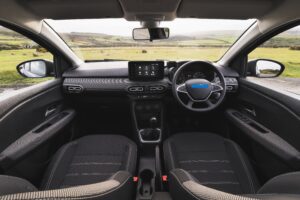Take a casual look at vehicles parked along any city street and you’ll see the bane of a car lover’s life – kerb rash (the tell-tale scrape along pristine alloys that insinuates a poor driver that lacks spacial awareness). And that’s why kerbs are this week’s Tarmac Tantrum.
Growing up, smaller cars and steel wheels (or hub caps) were the norm and as such kerb rash was never really an issue, in fact, should a wheel run along a concrete kerb, the kerb would come off second best, but not now. Alloy wheels have become an integral part of car design and this softer compound/low or wide rim mix has kerbs reeking their revenge with glee.
I’m ashamed to say that I have fallen foul to the curse of the bastard kerb on more than one occasion and the range of emotions that follow are multiple. From that initial stomach churning grinding sound, to anger, the feeling of stupidity, embarrassment and subsequent cost, it’s enough to have me stay in the car and never get out to look.
But is it the kerb’s fault? Well yes of course (kerbs are bastards after all) but I also feel that it’s a mixture of NZ’s narrow (or potholed) roads and the more expansive/ever increasing vehicle footprint.
Sure, modern cars come with more than enough protective beeps, which if heeded should keep you rash free. However, those beeps, (even when the speed has moved from slow to ‘flat line’) still has your large SUV sitting out in the middle of the road, and it then becomes Sophie’s choice – lose the wing mirror or kerb the wheel.
As it turns out, kerb rash is not just a cosmetic issue, it can cause dangerous structural damage to your wheels like bending, cracking, severe gouging, or chunking. A wheel with structural damage can break apart. Damage to the tire’s sidewall can result in unexpected blowouts. Continued kerb rash damage can result in front or rear suspension damage. And hard hits to the kerb can throw out the alignment on your car.
Therefore, when dealing with any wheel damage, it is always advisable to have your vehicle checked by a professional to determine if the damage is cosmetic or structural, understanding the degree of wheel damage is important to determine the type of repair.

Depending on your competency, damage to rims can be fixed by a well prepared do it yourself car owner. Depending on the extent of the damage, you’ll need sandpaper, putty, scouring pads, spray paint, primer, and a clear coat. Clean the damaged area of the wheel thoroughly (masking off the wheel, lug nuts, valve stems, and any other exposed areas).
Use coarse sandpaper to sand out the scuff marks and scratches and other defects, then apply automotive putty to the damaged areas and allow it to dry for at least 30 minutes.
Using a scuff pad to scuff around the damaged area until completely smooth, spray a primer a couple of times on the wheel then spray the paint on the wheel and sanding between coats. Allow the paint to dry overnight if at all possible before moving on to applying a clear coat over the paint.
Sounds pretty easy right? Should the damage be more severe though, seek professional help.
Protecting your wheels is also a possibility you should explore. The automotive world is continually coming up with different ways to bubble wrap your ride, wheel protective spray-on, wheel wax, and advanced quartz coatings solutions, are all being developed and upgraded.
When it comes to protecting your wheels though, it really is down to you and I, find wider streets or parking bays to park in, swallow your pride and use the vehicle’s parking aids, but above all else, exercise caution – remember kerbs are bastards!










